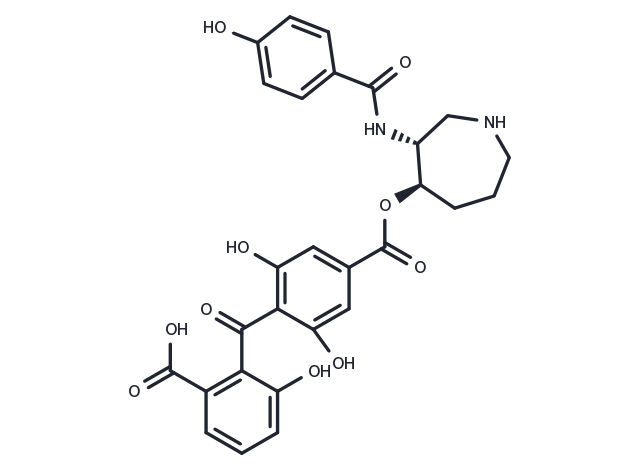Powder: -20°C for 3 years | In solvent: -80°C for 1 year


Balanol is an ATP-competitive Protein Kinase C and Protein Kinase A inhibitor.

| Pack Size | Availability | Price/USD | Quantity |
|---|---|---|---|
| 25 mg | 10-14 weeks | $ 3,920.00 | |
| 50 mg | 10-14 weeks | $ 5,180.00 | |
| 100 mg | 10-14 weeks | $ 7,300.00 |
| Description | Balanol is an ATP-competitive Protein Kinase C and Protein Kinase A inhibitor. |
| Synonyms | Ophiocordin, BA1, Azepinostatin, (-)-Balanol, (3R-trans)-Balanol |
| Molecular Weight | 550.51 |
| Formula | C28H26N2O10 |
| CAS No. | 63590-19-2 |
Powder: -20°C for 3 years | In solvent: -80°C for 1 year
You can also refer to dose conversion for different animals. More
bottom
Please see Inhibitor Handling Instructions for more frequently ask questions. Topics include: how to prepare stock solutions, how to store products, and cautions on cell-based assays & animal experiments, etc.
Balanol 63590-19-2 Ophiocordin BA 1 BA1 BA-1 Azepinostatin (-)-Balanol (3R-trans)-Balanol inhibitor inhibit
